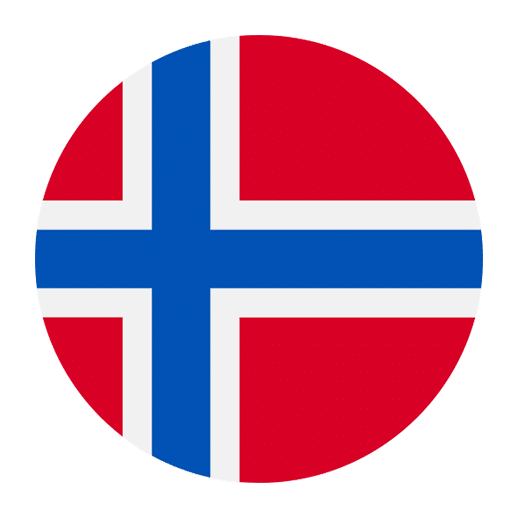Learning a new language can be both an exciting and challenging endeavor. One of the most crucial aspects of mastering any language is acquiring the vocabulary necessary to navigate everyday situations. When it comes to Norwegian, knowing how to ask for help is invaluable. Whether you’re a tourist, an expat, or simply learning Norwegian for fun, this guide will equip you with essential vocabulary and phrases for asking for help in Norwegian.
Basic Vocabulary for Asking for Help
Before diving into specific phrases, it’s helpful to familiarize yourself with some basic vocabulary words that will often appear in contexts where you’re seeking assistance.
– **Hjelp** – Help
– **Spørsmål** – Question
– **Problem** – Problem
– **Vennligst** – Please
– **Takk** – Thank you
– **Unnskyld** – Excuse me/Sorry
– **Kan** – Can
– **Hvordan** – How
– **Hvor** – Where
– **Hva** – What
– **Når** – When
– **Hvorfor** – Why
– **Noen** – Someone
– **Ingen** – No one
Common Phrases for Asking for Help
Once you have a grasp on some basic vocabulary, you can start to construct sentences that will help you in various situations. Here are some common phrases you might find useful:
General Requests for Help
When you need help in a general sense, these phrases can come in handy.
– **Kan du hjelpe meg?** – Can you help me?
– **Jeg trenger hjelp.** – I need help.
– **Kan noen hjelpe meg?** – Can someone help me?
– **Unnskyld, kan jeg få litt hjelp?** – Excuse me, can I get some help?
– **Vennligst hjelp meg.** – Please help me.
Asking for Directions
Getting lost in a new place can be stressful, but knowing how to ask for directions can save you a lot of trouble.
– **Hvordan kommer jeg meg til …?** – How do I get to …?
– **Hvor er nærmeste …?** – Where is the nearest …?
– **Kan du vise meg veien til …?** – Can you show me the way to …?
– **Er dette veien til …?** – Is this the way to …?
– **Jeg har gått meg vill. Kan du hjelpe meg?** – I am lost. Can you help me?
Inquiring About Services
Whether you need to find a restroom, a restaurant, or a pharmacy, these phrases will be useful.
– **Hvor er nærmeste toalett?** – Where is the nearest restroom?
– **Hvor kan jeg finne en restaurant?** – Where can I find a restaurant?
– **Er det en apotek i nærheten?** – Is there a pharmacy nearby?
– **Hvordan kommer jeg meg til busstasjonen?** – How do I get to the bus station?
– **Hvor kan jeg kjøpe en billett?** – Where can I buy a ticket?
Emergency Situations
In case of emergencies, knowing how to ask for help quickly and effectively is crucial.
– **Hjelp, det er en nødsituasjon!** – Help, it’s an emergency!
– **Ring politiet!** – Call the police!
– **Jeg trenger en ambulanse.** – I need an ambulance.
– **Jeg har mistet passet mitt.** – I have lost my passport.
– **Jeg trenger en lege.** – I need a doctor.
Useful Tips for Asking for Help in Norwegian
While knowing the right words and phrases is essential, here are some additional tips to make your interactions smoother.
Be Polite
Norwegians appreciate politeness. Using words like **vennligst** (please) and **takk** (thank you) can go a long way in ensuring you get the help you need.
– **Vennligst, kan du hjelpe meg?** – Please, can you help me?
– **Tusen takk for hjelpen.** – Thank you very much for your help.
Use Body Language
Sometimes, words might not be enough. Don’t hesitate to use body language to convey your message. Pointing to a map, showing an address, or even mimicking actions can help make your request clearer.
Learn Basic Pronunciation
Norwegian pronunciation can be tricky for English speakers. Practice the basic sounds and intonations to make sure you are understood when you ask for help. For example, the word **hjelp** is pronounced with a soft “j” sound, almost like “yelp” in English.
Practice with Native Speakers
If possible, practice asking for help with native speakers. This will not only help you get used to the pronunciation but also make you more comfortable using the phrases in real-life situations.
Contextual Scenarios
Let’s look at some practical scenarios where you might need to ask for help and how you can use the vocabulary and phrases we’ve covered.
Scenario 1: Lost in the City
Imagine you’re walking around Oslo and you suddenly realize you’re lost. You spot a local and decide to ask for help.
– **Unnskyld, kan du hjelpe meg? Jeg har gått meg vill. Hvordan kommer jeg meg til Karl Johans gate?**
– Translation: Excuse me, can you help me? I am lost. How do I get to Karl Johans Gate?
The local might respond with directions or even offer to walk with you part of the way.
Scenario 2: At the Train Station
You arrive at a train station and need to find out where to buy a ticket.
– **Unnskyld, hvor kan jeg kjøpe en billett?**
– Translation: Excuse me, where can I buy a ticket?
The person might point you to the ticket counter or a ticket machine.
Scenario 3: In a Restaurant
You’re in a restaurant and need to ask the waiter for something specific.
– **Unnskyld, kan jeg få menyen, vær så snill?**
– Translation: Excuse me, can I have the menu, please?
Or if you need to ask about vegetarian options:
– **Har dere vegetarretter?**
– Translation: Do you have vegetarian dishes?
Scenario 4: Emergency Situation
You witness an accident and need to call for help immediately.
– **Hjelp, det har vært en ulykke! Ring politiet!**
– Translation: Help, there has been an accident! Call the police!
Practice Makes Perfect
The key to mastering any new vocabulary is consistent practice. Here are a few methods to help you retain and effectively use the phrases and words you’ve learned.
Flashcards
Create flashcards with Norwegian phrases on one side and their English translations on the other. Review them regularly to reinforce your memory.
Role-Playing
Engage in role-playing exercises with a friend or language partner. Take turns asking for help in various scenarios to build your confidence and fluency.
Language Apps
Use language learning apps like Duolingo, Memrise, or Babbel that offer Norwegian courses. These apps often include speaking and listening exercises that can help you practice asking for help.
Immersive Experiences
If possible, immerse yourself in environments where Norwegian is spoken. Attend language meetups, watch Norwegian TV shows or movies, and listen to Norwegian music to get a feel for the language in different contexts.
Conclusion
Learning how to ask for help in Norwegian can significantly enhance your experience, whether you’re traveling, living in Norway, or simply exploring the language. By familiarizing yourself with basic vocabulary and common phrases, practicing pronunciation, and engaging in real-life scenarios, you’ll be well-equipped to navigate any situation with confidence. Remember, the more you practice, the more natural it will feel. So, don’t hesitate to ask for help and make the most of your Norwegian language journey.

